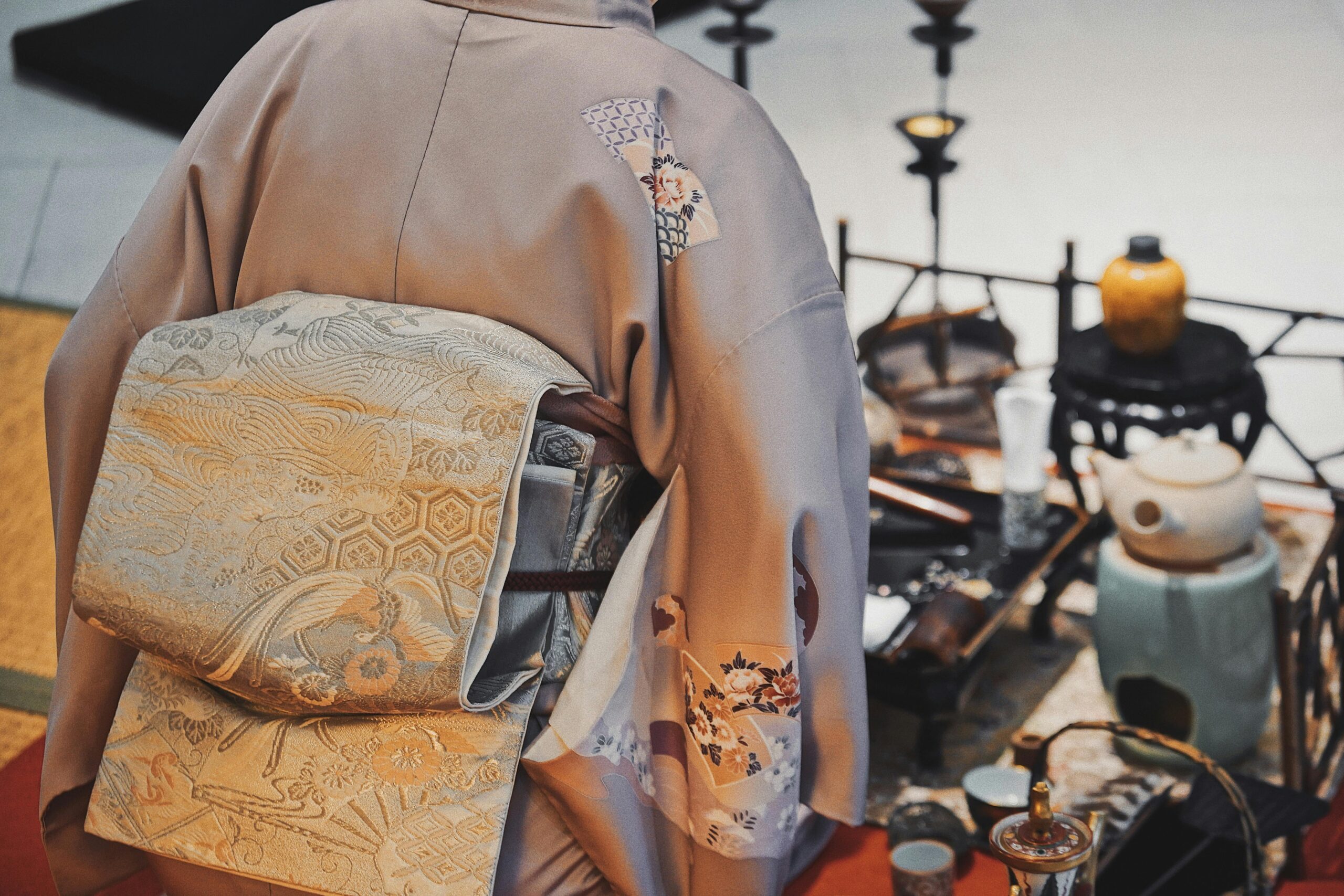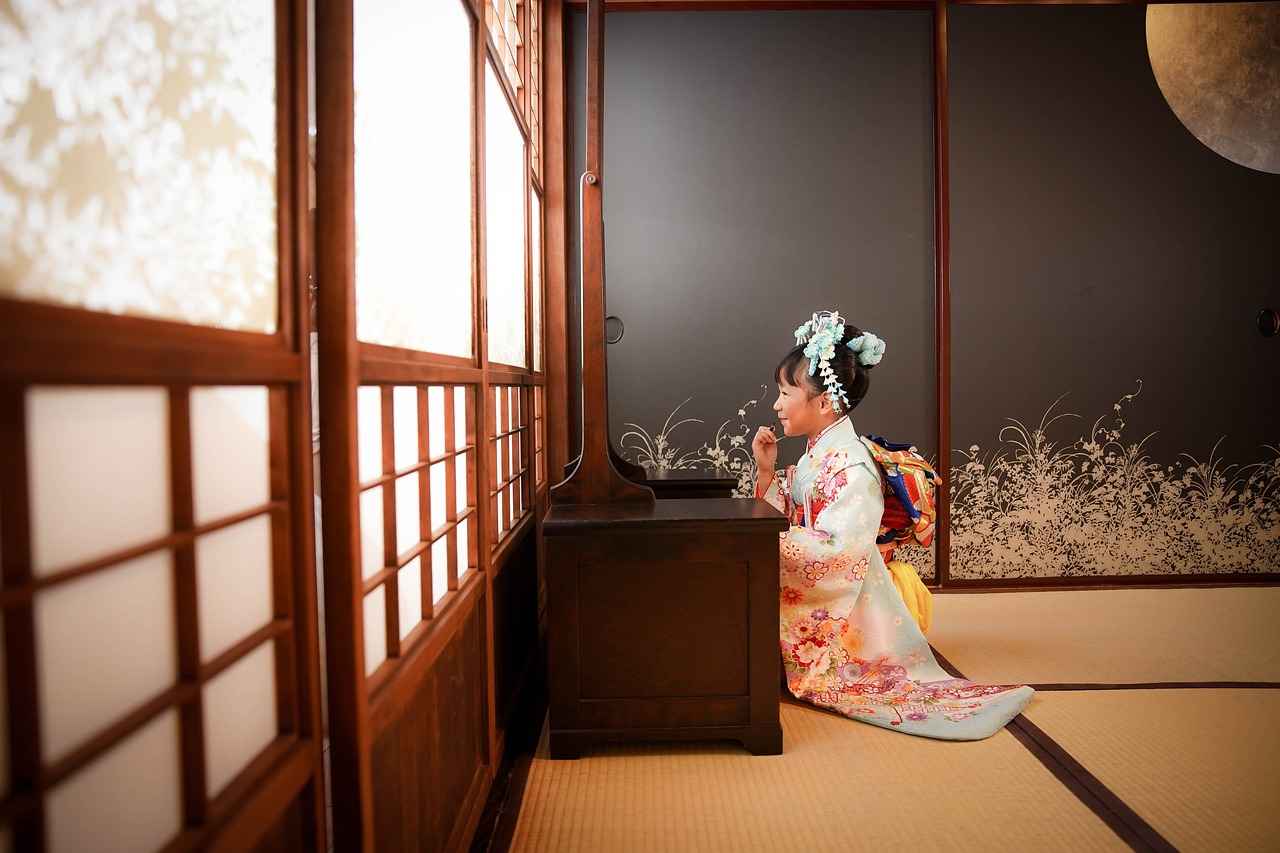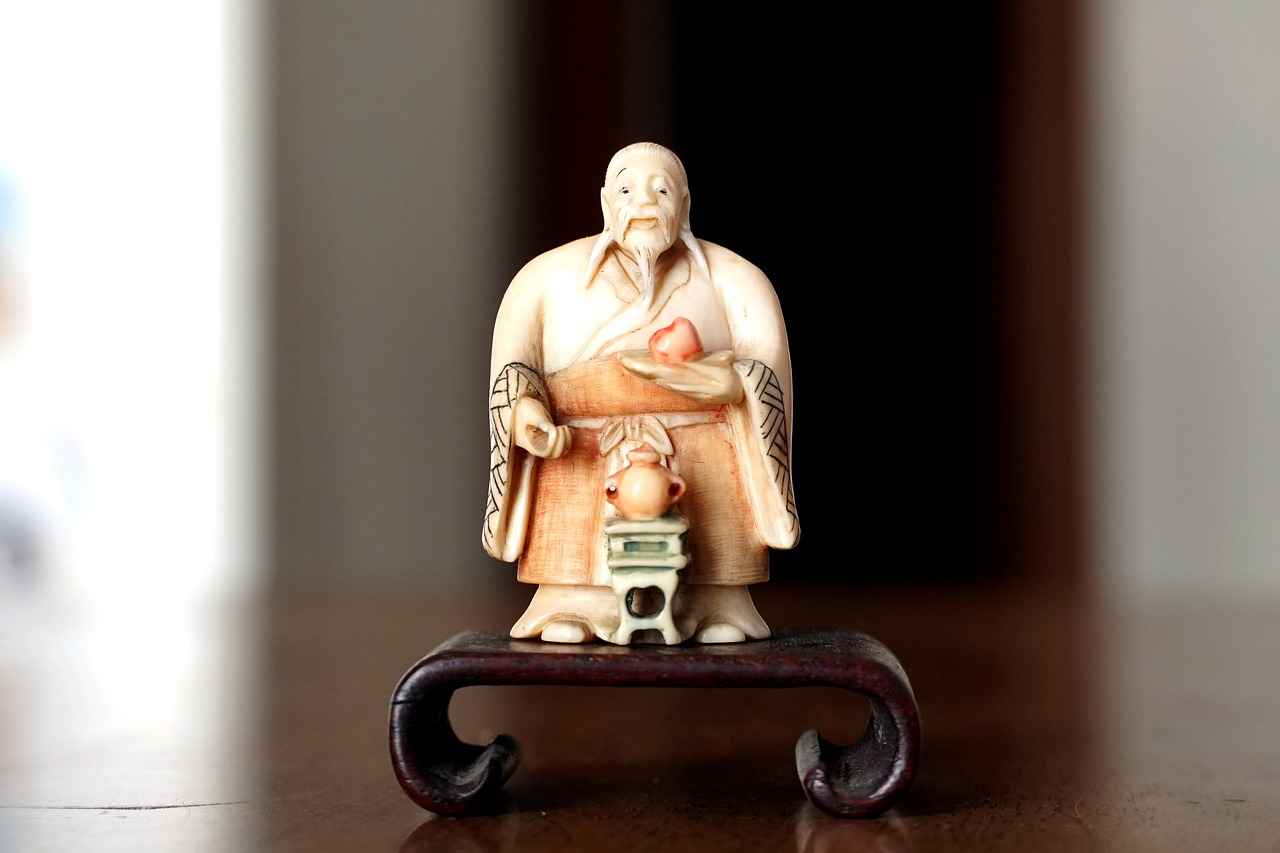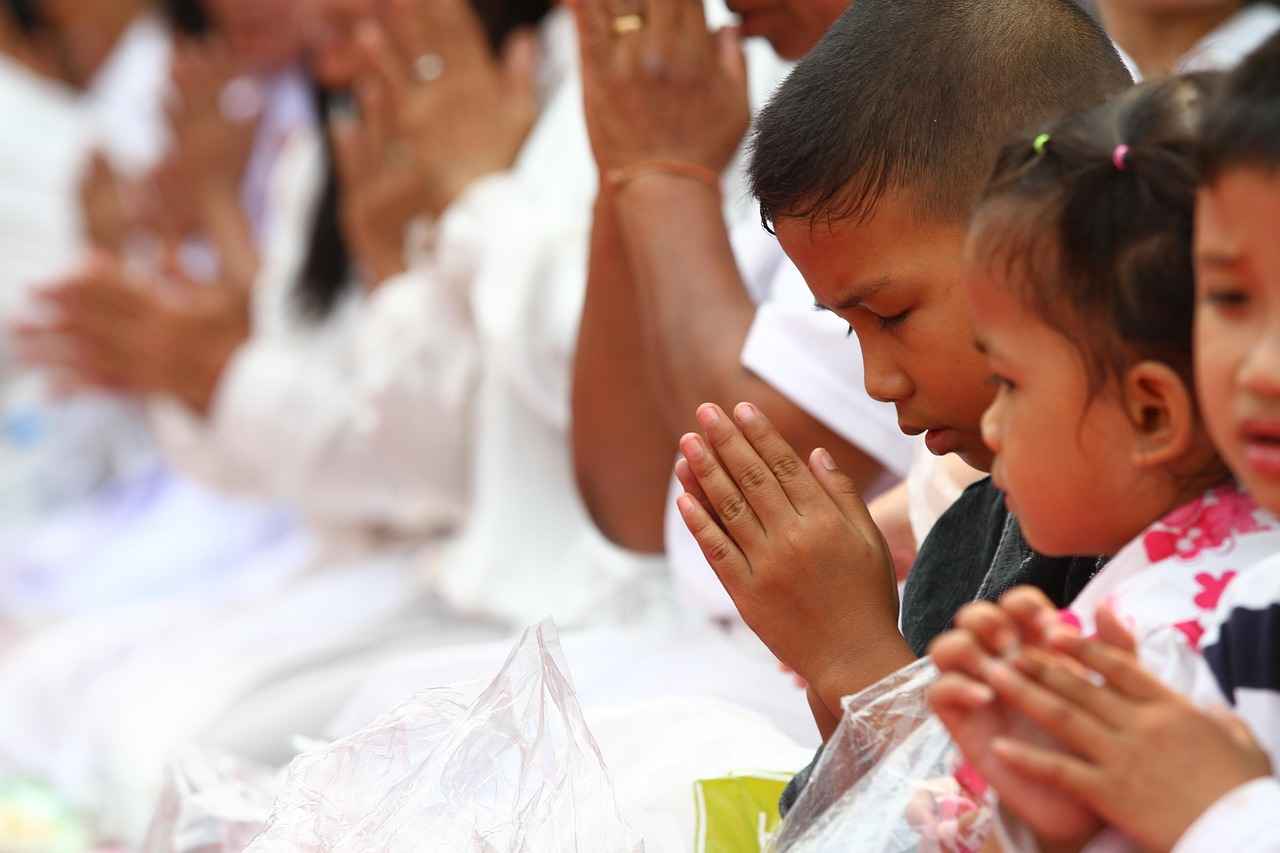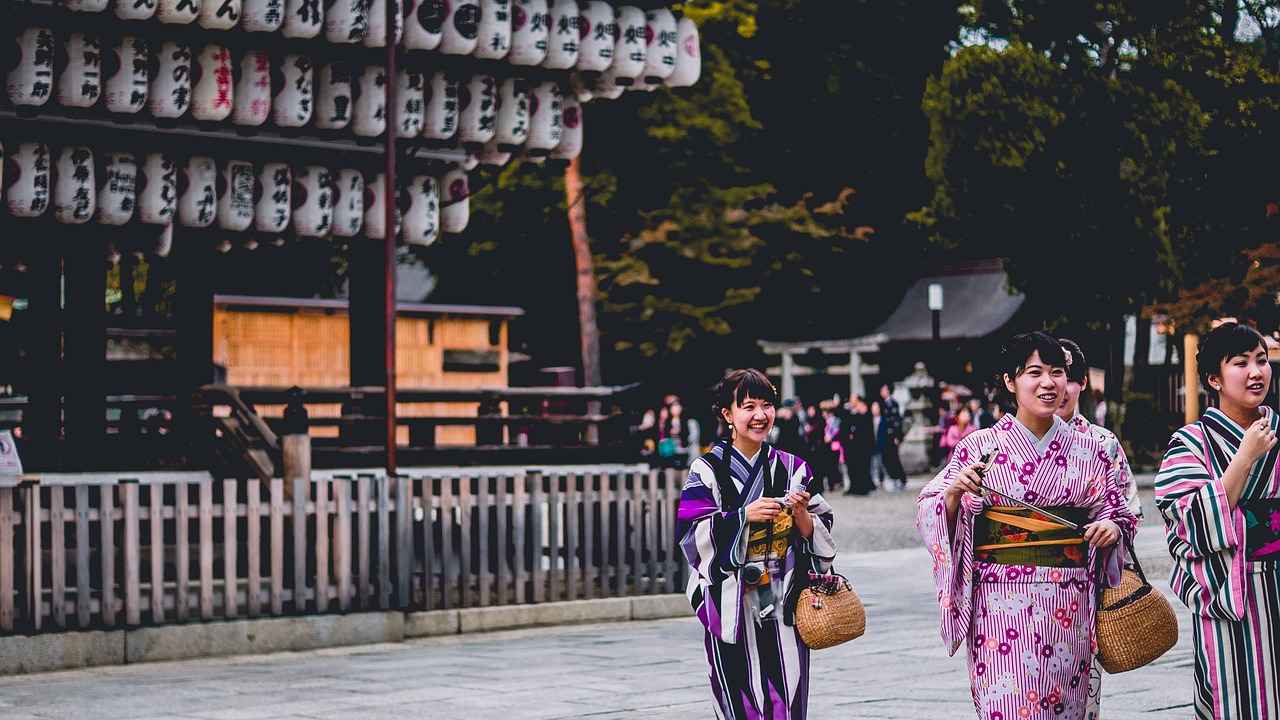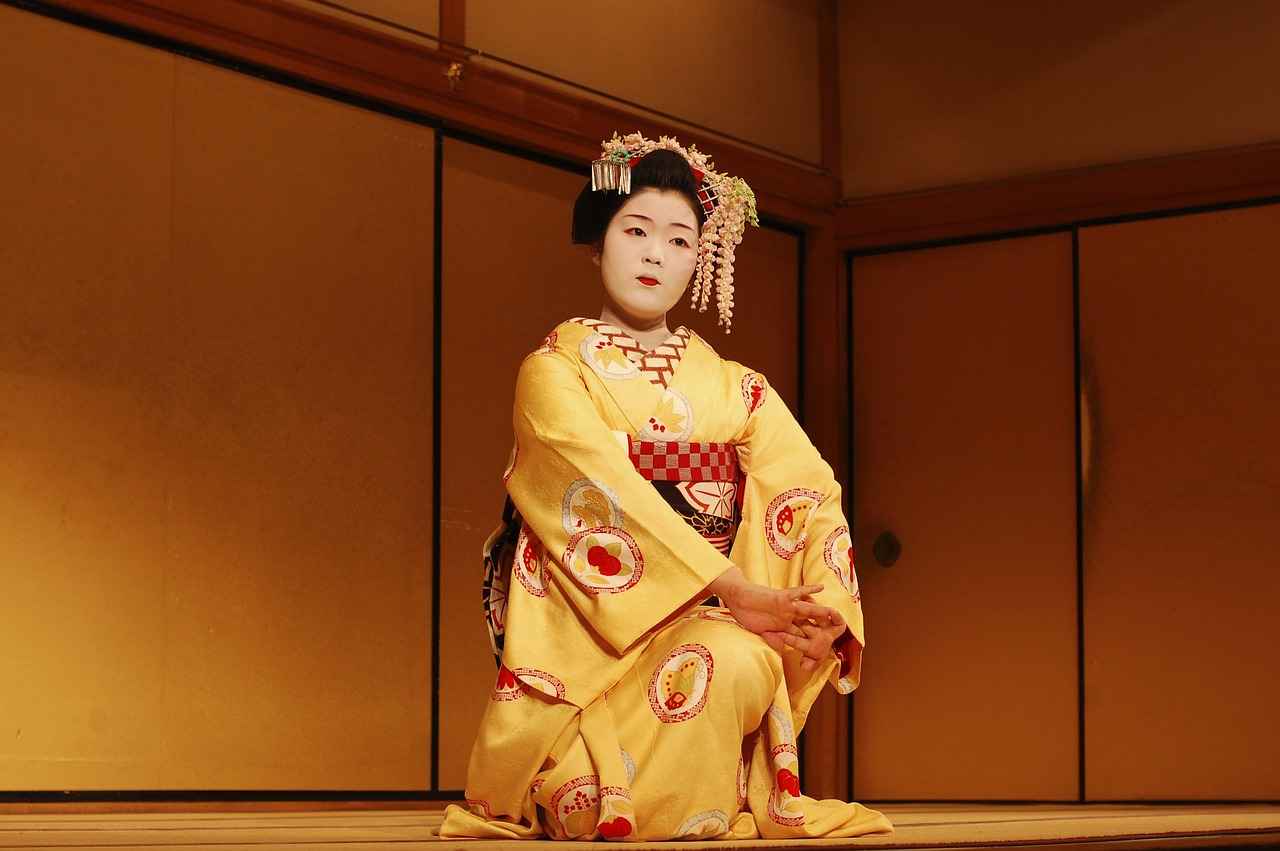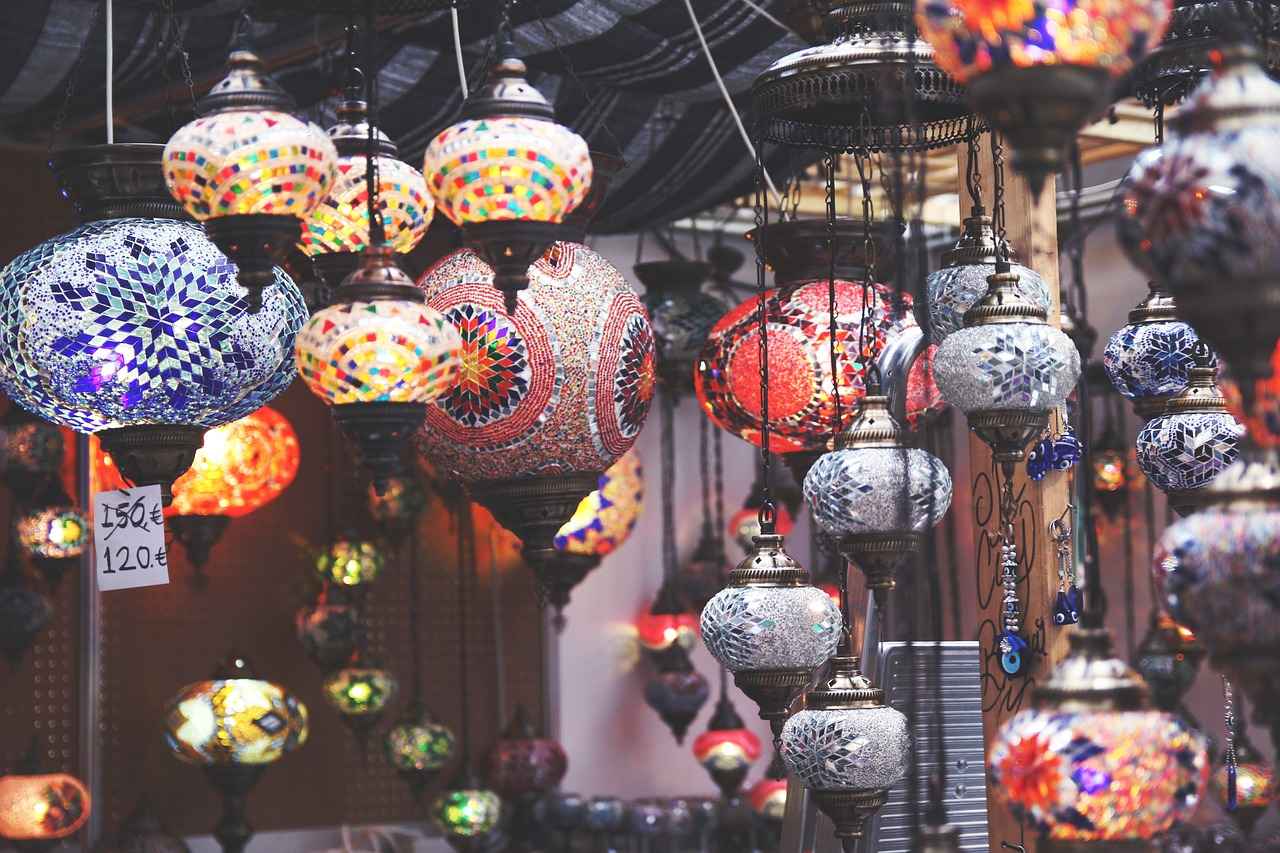Are you curious about the Japanese kimono and its fascinating history? This iconic garment, known for its timeless elegance, has captivated people around the world for centuries. With intricate designs and vibrant colors, the kimono is more than just clothing; it tells a story of Japanese culture and tradition. How did this exquisite piece of clothing evolve through the ages? From formal ceremonies to modern fashion, the kimono has maintained its relevance, showcasing the rich heritage of Japan. Discovering the world of Japanese kimonos opens up a treasure trove of history and artistry that is simply irresistible. Have you ever wondered why the kimono is considered a symbol of beauty and grace? Join us as we delve deeper into the craftsmanship behind this masterpiece and explore its significance in contemporary society. Whether you are a fashion enthusiast or simply intrigued by Japanese traditions, understanding the kimono’s rich history will leave you in awe. Let’s embark on a journey to uncover the secrets of the Japanese kimono and appreciate its enduring legacy.
Unraveling the Layers: 7 Fascinating Facts About the Japanese Kimono You Never Knew
The Japanese kimono is more than just a garment; it’s a vibrant tapestry woven with culture, tradition, and artistry. While many people might think they know about this iconic attire, there are layers of history and meaning that often go unnoticed. Here, we unravel the layers by sharing seven fascinating facts about the Japanese kimono that you probably never knew. Whether you are a fashion enthusiast, a culture buff, or just curious, these insights will enrich your understanding of this timeless piece of clothing.
The Origins of the Kimono: A Historical Dive
Kimonos have roots that stretch far back into Japanese history, originating around the 8th century. They were initially worn by both men and women, and their design varied depending on the era, region, and social status. Unlike Western clothing, which evolved towards separate garments, the kimono maintained a singular, elegant structure.
- Early Designs: Early kimonos were plain and made of hemp or silk. Over time, the fabric and patterns became more intricate, indicating wealth and status.
- Heian Period Influence: During the Heian period (794-1185), the kimono began to adopt elaborate layering techniques and vibrant colors, making it an art form in itself.
The Symbolism Behind Colors and Patterns
Each kimono’s color and pattern carries significant meaning, often reflecting the wearer’s age, marital status, and the season. For example, young unmarried women might wear bright colors and floral patterns, while older women might opt for more subdued tones.
- Red: Often symbolizes good fortune and joy.
- Green: Represents serenity and growth.
- Blue: Associated with calmness and stability.
The Art of Wearing a Kimono: A Complex Process
Dressing in a kimono is far from simple; it involves multiple layers and a series of steps. Each layer serves a purpose and contributes to the overall aesthetic. Here’s how it generally goes:
- Base Layer: A simple undergarment called a hadajuban.
- Kimono: The main garment, usually made from silk.
- Obi: A wide belt that can be tied in various styles, adding both beauty and structure.
- Obijime and Obiage: Additional decorative elements that add flair.
Mastering the art of wearing a kimono can take years of practice, and many people learn from skilled artisans.
The Kimono Today: Modern Interpretations
While the traditional kimono remains a staple for special occasions, modern designers have started to incorporate kimono elements into contemporary fashion. This fusion creates a unique blend of Western and Eastern styles that appeal to the younger generations.
- Street Style: Many young people in Japan wear modified kimonos, pairing them with sneakers or jeans for a casual look.
- High Fashion: International designers have also drawn inspiration from kimonos, featuring them on runways and in collections.
Care and Preservation: A Delicate Balance
Kimonos are not just clothes; they’re heirlooms that require special care to maintain their beauty. Here are some tips for preserving a kimono:
- Storage: Always store kimonos in a cool, dark place, away from direct sunlight to prevent fading.
- Cleaning: Avoid machine washing; instead, hand wash with gentle soap and hang to dry.
- Avoid Wrinkles: Use a steaming method instead of ironing to preserve the fabric’s integrity.
Festivals and Traditions: Celebrating the Kimono
Kimonos are integral to many Japanese festivals and cultural events, each showcasing the garment’s beauty and significance. For example:
- Shichi-Go-San: A festival for children aged three, five, and seven where they wear traditional kimonos.
- Hanami: Cherry blossom viewing where people dress in kimonos to celebrate the arrival of spring.
These events keep the tradition alive and introduce the kimono to new generations.
The Future of the Kimono: Global Influence
As global interest in the kimono grows, its influence expands beyond Japan. Designers and fashion houses around the world are embracing the kimono’s aesthetics, leading to a cross-cultural dialogue in fashion.
- Cultural Collaborations: Collaborations between Western and Japanese designers are becoming more common.
- Fashion Education: Fashion schools are starting to include courses on traditional garments like the kimono, emphasizing their historical and cultural significance.
The Japanese kimono is not just a piece of clothing; it’s an enduring symbol of elegance, tradition, and artistic expression. With its rich history and evolving presence in modern fashion, the kimono continues to inspire and captivate people around the globe. By understanding its complexities, we appreciate not just the garment itself, but also the culture that crafted it.
The Evolution of Elegance: How the Kimono Has Transformed Over Centuries
The kimono, a traditional Japanese garment, has been a symbol of grace and style for centuries. Its journey from a practical everyday outfit to a global fashion statement is nothing short of fascinating. The evolution of elegance in the kimono reflects the changing values, aesthetics, and cultural influences present in Japan and beyond. This article will delve into the history, versatility, and timeless beauty of the Japanese kimono, revealing why it remains a wardrobe staple today.
The Origins of the Kimono
The history of the kimono dates back to the Heian period (794-1185), when it was primarily worn as a robe. Initially, the garment was quite simple in design, often featuring straight lines and minimal adornments. As time went on, the kimono began to evolve, influenced by various social and cultural factors.
- Heian Period (794-1185): Simple design, long sleeves, and layered styles.
- Edo Period (1603-1868): Bright colors and intricate patterns became popular.
- Meiji Period (1868-1912): Western influences began to creep in, blending styles.
The Kimono Today: A Blend of Tradition and Modernity
In contemporary fashion, the kimono has transformed significantly. Designers are reinterpreting this classic piece, combining traditional elements with modern styles. The result is a garment that can be worn for various occasions, from casual outings to formal events.
- Casual Kimonos: Lightweight fabrics, often paired with jeans or dresses.
- Formal Kimonos: Silk, elaborate designs, usually worn during ceremonies.
- Fashion Kimonos: Contemporary styles with bold prints and shorter lengths.
Key Features of the Japanese Kimono
Several aspects of the kimono contribute to its enduring charm and elegance:
- Fabric: Traditionally made from silk, cotton, or linen, each fabric type offers different textures and appearances.
- Patterns: Designs vary from floral motifs to geometric shapes, often symbolizing seasons or cultural meanings.
- Colors: Each hue carries significance. For example, red symbolizes happiness and good luck, while white is associated with purity.
The Cultural Significance of the Kimono
Kimonos are not just clothing; they represent Japanese culture and identity. They are often worn during significant life events like weddings, tea ceremonies, and festivals. The way a kimono is worn, including how it is tied and layered, can convey messages about status, age, and occasion.
- Obi: The wide belt used to secure the kimono, which varies in style and width depending on the kimono’s formality.
- Tabi: Split-toe socks that are traditionally worn with kimonos, paired with zori or geta sandals.
A Global Influence
Over the years, the kimono has captured the attention of fashion designers worldwide. Its unique silhouette and rich history have inspired countless collections. Many Western designers integrate kimono-inspired elements into their work, showcasing the garment’s versatility.
- Design Collaborations: High-profile brands have launched limited-edition kimono lines.
- Fashion Weeks: Kimonos have graced runways, often reimagined with modern fabrics and styles.
Tips for Wearing a Kimono
For those looking to incorporate a kimono into their wardrobe, here are some practical tips:
- Layering: Use a kimono as a lightweight layer over a simple outfit to add flair.
- Accessorizing: Pair with statement jewelry or a belt to create a more defined silhouette.
- Footwear: Choose appropriate shoes; sandals work well for casual looks, while heels can elevate a formal ensemble.
The Future of the Kimono
As the world continues to embrace cultural diversity, the kimono is likely to retain its place in fashion. It’s not just a garment, but a representation of history, artistry, and identity. The ongoing reinterpretation of the kimono by designers around the globe ensures that its elegance will continue to evolve.
The kimono stands as a testament to enduring style, blending centuries of tradition with contemporary fashion. Its rich history and cultural significance make it more than just a piece of clothing—it’s a wearable work of art that tells a story. Whether you’re attending a formal event or simply looking to add a touch of elegance to your everyday attire, the kimono offers endless possibilities for self-expression and style.
From Fabric to Fashion: Exploring the Intricate Craftsmanship Behind Japanese Kimonos
Japanese kimonos are more than just clothing; they are a deep representation of culture, artistry, and tradition. Often admired for their intricate designs and rich history, kimonos have a story that stretches back centuries. In this article, we will dive into the world of kimonos, exploring the craftsmanship that goes into them and the elegance they bring to fashion.
The Historical Background of Kimonos
Kimonos originated in Japan during the Heian period (794-1185), they were initially simple garments, but over time, they evolved into what we know today. The word “kimono” literally means “thing to wear,” and it reflects the versatility of this attire. As society changed, so did the designs of kimonos, adapting to trends and personal expression.
- Early kimonos were made from hemp and silk, as time passed, they began to incorporate different fabrics and dyes.
- In the Edo period (1603-1868), kimonos became a symbol of status, with variations indicating rank and profession.
- After World War II, western fashion influenced kimonos, but they still maintain a significant place in Japanese culture.
The Fabric: An Essential Element
The choice of fabric is critical in the creation of a kimono. Different materials convey different meanings and are suitable for various occasions. Some common fabrics include:
- Silk: Most traditional and luxurious, often used for formal occasions.
- Cotton: Casual and comfortable, perfect for summer festivals.
- Wool: Worn in colder months, providing warmth while maintaining style.
These fabrics aren’t just for aesthetics; they also have cultural significance. For example, silk is often associated with nobility, while cotton is more accessible to the everyday person.
Craftsmanship: The Making of a Kimono
Creating a kimono involves several intricate steps, each requiring skill and precision. Artisans spend years perfecting their craft, ensuring that every piece is a work of art. Here are the key stages in the kimono-making process:
- Designing: Artists sketch the patterns, often inspired by nature, folklore, or traditional motifs.
- Dyeing: Techniques like shibori (tie-dye) and yuzen (hand-painted) are used to create vibrant colors and intricate designs.
- Weaving: Fabrics are woven using looms, with each thread carefully placed to ensure quality.
- Sewing: Tailors cut and sew the fabric together, paying close attention to align patterns and seams.
This process can take weeks or even months to complete, depending on the complexity of the design.
The Timeless Elegance of Kimonos
Kimonos are not just garments; they are symbols of elegance that have stood the test of time. Their versatility allows them to be worn in various ways, making them suitable for many occasions. Here are some key aspects that highlight their elegance:
- Layering: Kimonos can be layered with different garments, adding depth to an outfit.
- Accessorizing: The right obi (sash) and accessories can transform a simple kimono into a striking ensemble.
- Cultural Significance: Wearing a kimono often signifies respect for tradition, making it a thoughtful choice for special events.
The Modern Adaptation of Kimonos
In recent years, kimonos have made their way into global fashion, influencing styles worldwide. Designers are incorporating elements of kimono aesthetics into contemporary garments, bridging the gap between tradition and modernity. Some examples include:
- Kimono jackets: These are often worn casually, paired with jeans or dresses.
- Streetwear: Kimonos are now being integrated into urban fashion, reflecting a blend of cultures.
- Bridal wear: Many modern brides are choosing kimonos for their wedding ceremonies, paying homage to their heritage.
Why You Should Consider a Kimono
If you haven’t yet added a kimono to your wardrobe, you might be missing out on a unique fashion statement. Here’s why kimonos are a must-have:
- Versatile: They can be dressed up or down, making them suitable for various events.
- Comfortable: Loose-fitting and breathable, kimonos are perfect for any season.
- Cultural Appreciation: Wearing a kimono can show respect for Japanese culture and history.
Kimonos are not just fashion items; they are a blend of artistry and tradition that continues to inspire. Their intricate craftsmanship and timeless elegance make them stand out in the world of fashion. Whether you’re attending a formal event or looking to elevate your everyday style, a kimono can be a perfect choice. Embrace the richness of its history and craftsmanship, and let the beauty of this traditional garment shine in your wardrobe.
Cultural Significance: What the Colors and Patterns of a Kimono Reveal About Japanese Heritage
The Kimono, a traditional Japanese garment, is more than just clothing; it’s a vibrant tapestry woven with history, culture, and artistry. Each kimono tells a story, reflecting the wearer’s social status, the time of year, and even specific occasions. The colors and patterns of a kimono reveals deep connections to Japanese heritage, and understanding this can enrich one’s appreciation for this timeless attire.
The Colors of a Kimono: More Than Meets the Eye
Colors in kimono are not just for aesthetics; they are imbued with meaning. For instance, certain colors are associated with specific seasons or events. Here’s a brief rundown of some common colors and their meanings:
- Red: Symbolizes happiness and good fortune. Often seen in wedding kimonos.
- Blue: Represents calmness and stability, frequently used in summer kimonos.
- Black: Traditionally worn during mourning, but can also signify elegance in formal wear.
- Green: Reflects nature and fertility, a popular color in spring kimonos.
- Purple: Historically associated with nobility and wealth, it’s a color of choice for special occasions.
Patterns, too, carry significant meaning and often echo natural themes or cultural symbols.
The Patterns: A Window into Japanese Culture
Patterns on a kimono can range from simple to highly intricate designs. These designs often reflect nature, mythology, and seasonal changes, thus linking the wearer to the world around them. Here’s some common pattern motifs and their significance:
- Asanoha: A hemp leaf pattern that symbolizes growth and resilience.
- Seigaiha: The blue ocean waves pattern; it represents peace and good luck.
- Kikkō: The tortoiseshell pattern symbolizes longevity and good fortune.
- Tachiwaki: A rising wave that signifies progress and growth.
Each pattern can tell a different story, often connected to the wearer’s family or personal history.
The Historical Context of the Kimono
The kimono has evolved significantly throughout Japan’s history, adapting to societal changes and influences from abroad. Initially, the kimono was a practical garment made from simple materials. As time passed, it became a canvas for artistic expression. By the Edo period (1603-1868), kimono-making techniques had advanced, leading to more elaborate designs and color usage.
- Heian Period (794-1185): Kimonos were often layered, leading to complex styles. Colors and patterns were heavily regulated by the court.
- Edo Period (1603-1868): The rise of merchant class allowed kimonos to be more accessible, leading to a boom in creative designs and fabrics.
- Meiji Period (1868-1912): Western fashion influences began to emerge. Kimonos incorporated new materials and styles, blending tradition with modernity.
Types of Kimono and Their Uses
Kimonos are not just one style; they come in various forms, each suited for different occasions. Here’s a quick guide to some types of kimono:
- Furisode: A long-sleeved kimono worn by young unmarried women, often on special occasions like weddings.
- Tomesode: A formal kimono with shorter sleeves, typically worn by married women during celebrations.
- Yukata: A casual summer kimono, usually made from cotton, and often worn at festivals.
- Hifu: A kimono jacket that can be worn over other garments for warmth.
Contemporary Relevance of the Kimono
In today’s world, the kimono remains a symbol of Japanese identity. Despite the westernization of fashion, many people still embrace kimonos during festivals, weddings, and cultural events. Designers are also innovating by blending traditional techniques with modern sensibilities, creating pieces that appeal to younger generations.
- Sustainable Fashion: Many artisans are focusing on sustainable practices to preserve traditional techniques.
- Cultural Exchanges: International interest in Japanese culture has led to a resurgence in kimono fashion, with collaborations across the globe.
- Fashion Runways: Modern fashion shows often feature kimono-inspired designs, showcasing the versatility of this iconic garment.
The kimono is a living piece of history that continues to evolve while staying true to its roots. Understanding the cultural significance of its colors and patterns not only adds depth to one’s appreciation but also highlights the rich tapestry of Japanese heritage. As we embrace fashion from around the world, the kimono stands as a beautiful reminder of the stories woven into every thread.
Modern Interpretations: 5 Stylish Ways to Incorporate Kimono Elements into Your Wardrobe Today
The allure of the Japanese kimono has been captivating fashion enthusiasts for centuries. Its rich history and timeless elegance makes it a perfect source of inspiration for modern wardrobes. Today, we dive into five stylish ways to incorporate kimono elements into your outfits, giving a nod to tradition while embracing contemporary style. Whether you want to add a touch of sophistication or a dash of flair, these interpretations will surely elevate your fashion game.
1. Kimono Jackets: A Chic Layering Piece
One of the most accessible ways to integrate kimono elements into your wardrobe is through kimono jackets. Often made from lightweight silk or cotton, these jackets can be worn over dresses, tops, or even casual t-shirts.
- Why Choose a Kimono Jacket?
- Versatile: Can be dressed up or down.
- Comfortable: Loose-fitting and breathable.
- Unique: Adds a cultural touch to any outfit.
When pairing a kimono jacket, think about contrasting the patterns with your base outfit. A floral kimono over a simple white tee and jeans can create an eye-catching ensemble.
2. Kimono-Inspired Wrap Dresses
Wrap dresses are another fantastic way to channel the essence of the kimono. They often feature similar silhouettes and can be found in various prints and colors that reflect traditional Japanese aesthetics.
- Key Features of Wrap Dresses:
- Adjustable fit, accommodating different body types.
- Enhances the waistline, giving a flattering shape.
- Often made from soft, flowing fabrics that mimic kimono materials.
You can look for wrap dresses with bold prints or even opt for one with subtle kimono motifs. Pair these with strappy sandals or ankle boots for a modern twist, and you’ll have a stylish outfit for both day and night.
3. Incorporating Kimono Fabrics in Everyday Wear
Sometimes, it’s all about the fabric. Using traditional kimono fabrics in modern designs can create a beautiful fusion. Think of skirts, tops, or even trousers made from silk or satin that showcases intricate patterns reminiscent of kimonos.
- Fabric Ideas:
- Silk: Luxurious and soft, perfect for special occasions.
- Cotton: Breathable and casual, great for everyday wear.
- Brocade: Richly textured, ideal for statement pieces.
A flowing kimono-style blouse made from silk can be paired with tailored pants for an office-ready look or with denim shorts for a casual outing.
4. Modern Accessories with a Kimono Flair
Accessorizing is an easy way to add kimono elements without overhauling your entire wardrobe. Consider statement pieces like obi belts or even earrings that draw inspiration from traditional designs.
- Accessory Suggestions:
- Obi Belts: These wide belts can define your waist and add an elegant touch.
- Kimono-Inspired Scarves: Use them as headbands or neck scarves for a chic addition.
- Jewelry: Look for pieces that feature traditional motifs like cherry blossoms or cranes.
These small touches can transform a basic outfit into something truly special. A simple black dress can be elevated with a vibrant obi belt and a matching scarf.
5. Footwear: Kimono-Style Sandals and Heels
Footwear plays a crucial role in tying an outfit together. Look for sandals or heels that incorporate kimono-inspired designs. Styles that feature intricate embroidery or fabric detailing will add a unique flair to your look.
- Types of Footwear:
- Slingback sandals with floral prints.
- Heels made from kimono fabric or featuring traditional patterns.
- Flat sandals with obi-style straps.
These can complement your outfit beautifully. Imagine wearing a solid-colored sundress with embroidered sandals! It’s a perfect balance of modern and traditional, making you stand out effortlessly.
The Timeless Appeal of the Japanese Kimono
The Japanese kimono is more than just a garment; it is a symbol of rich heritage and craftsmanship. Dating back to the Heian period (794-1185), kimonos were originally worn by the aristocracy and later became popular across all social classes. The intricate designs, colors, and materials used in kimonos tell stories of family, status, and culture.
As you explore ways to incorporate kimono elements into your wardrobe, remember that the essence of the kimono lies in its elegance and adaptability. By selecting pieces that resonate with your personal style, you can honor this beautiful tradition while crafting a modern aesthetic.
So dive into the world of kimonos and discover how these timeless pieces can bring a fresh perspective to your wardrobe today!
Conclusion
In conclusion, the Japanese kimono is not just a garment but a profound symbol of culture, history, and artistry. Throughout this article, we explored the intricate designs, rich fabrics, and the significance of colors and patterns that convey messages about the wearer’s status, age, and life events. We also delved into the various styles of kimono, from the formal furisode to the casual yukata, each serving unique purposes in Japanese society. As the world embraces diversity in fashion, the kimono continues to inspire global trends while reminding us of its deep-rooted traditions. Whether you’re considering wearing a kimono for a special occasion or simply wish to appreciate its beauty, take a moment to learn more about this exquisite piece of heritage. Let the kimono be a bridge that connects you to the vibrant tapestry of Japanese culture, encouraging appreciation and respect for its timeless elegance.
